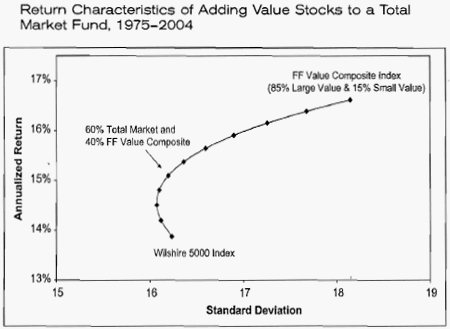How To Choose A Bond Mutual Fund Amateur Asset Allocator
Post on: 1 Июнь, 2015 No Comment

Choosing a bond mutual fund has a lot in common with choosing a good stock mutual fund . Many of the same rules apply to both stock and bond mutual funds; however, bond funds are on the average even less complicated and easier to choose. Im going to assume for the purposes of this article that youre already familiar with modern portfolio theory and the agree you should allocate at least a portion of your portfolio to bonds.
By the way, the best way to get detailed information on any mutual fund is by signing up for a free Morningstar account . You can find all the statistics mentioned below plus dozens more at Morningstar.
Attributes Of A High-Performing Bond Mutual Fund
First, Ill highlight a few attributes good stock and bond funds tend to have in common .

- Low Expenses Since bonds have lower expected returns than stocks, high expenses cut even deeper into the returns of bond funds than stock funds. Its doubly-important to keep a lid on expenses here.
- Index Funds Rule — Indexing works just as well with bonds as with stocks. Better, perhaps, because of the even greater importance of low expenses in the bond world. Just like their stock counterparts, most actively-managed bond mutual funds fail to beat their relevant index.
- Diversified It goes without saying that good bond funds are usually broadly diversified, owning hundreds if not thousands of bonds across multiple durations and market segments.
Bond-Specific Attributes
- Average Duration Duration is a measure of a bond funds sensitivity to changes in interest rates. The lower the duration, the less volatile the fund will likely be. An average duration of 4 means that particular funds Net Asset Value (NAV) would be expected to drop 4% for every 1% rise in interest rates (and vice versa). As a point of reference, Vanguards Total Bond Market Index Fund (VBMFX ) has an average duration of 4.3 years, meaning it will fluctuate 4.3% for every 1% change in interest rates.
- Yield To Maturity The yield to maturity is simply the current interest rate a bond fund is paying. Assuming interest rates remain steady, yield to maturity is also the expected annual return of the portfolio.
- Average Maturity All else being equal, the nearer a bonds maturity the lower its interest rate and the less volatile it will be. Of particular importance is the fact that long-term bonds (10 years or more) tend to be very vulnerable to inflation and usually suffer poor returns during inflationary periods.
- Credit Quality All else equal, higher-quality investment grade bonds tend to pay slightly lower interest rates than lower-rated junk bonds, but also tend to have a much lower default rate. Junk bonds, on the other hand, tend to pay higher interest rates to compensate for the higher risk of default. There are no guarantees going forward, but historically junk bonds have not yielded high enough returns to compensate investors for the additional risk theyve had to take on to own them.














